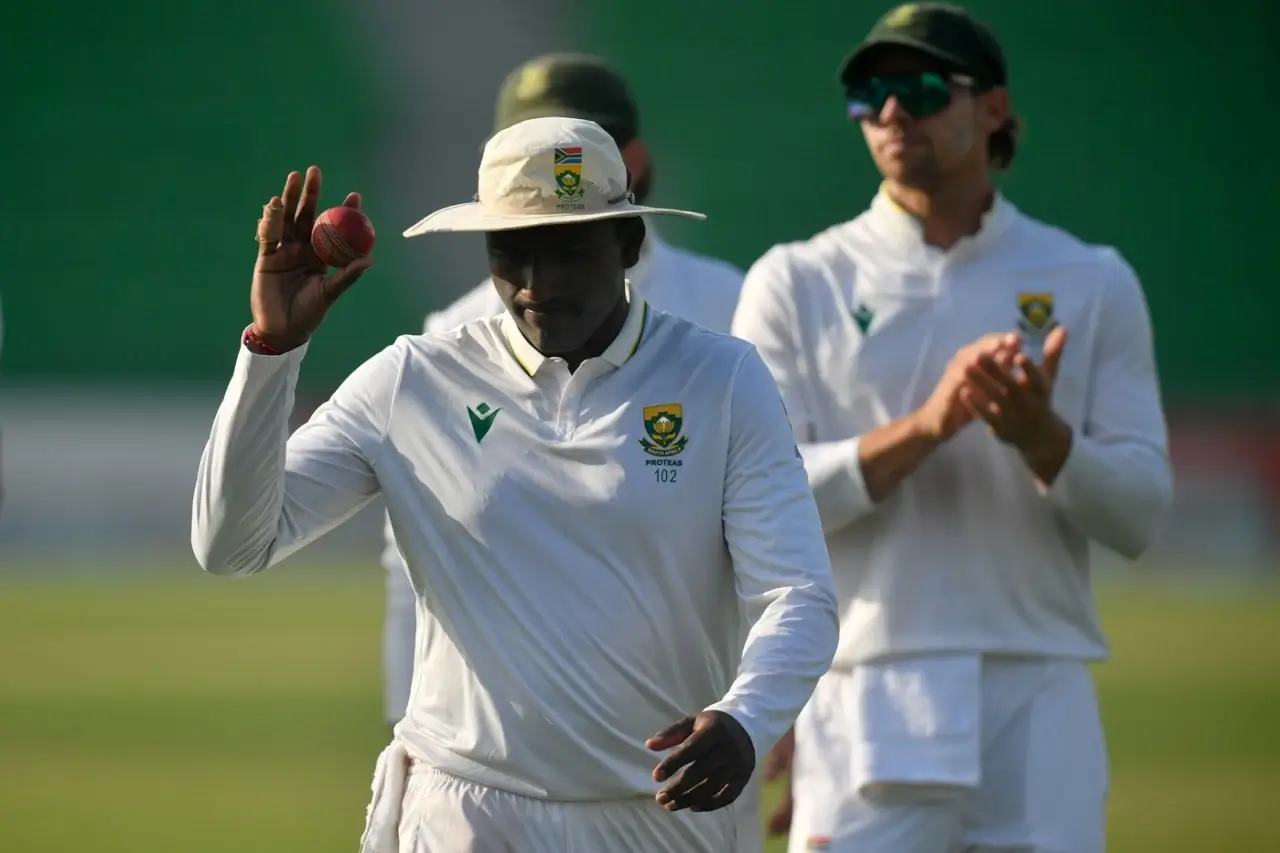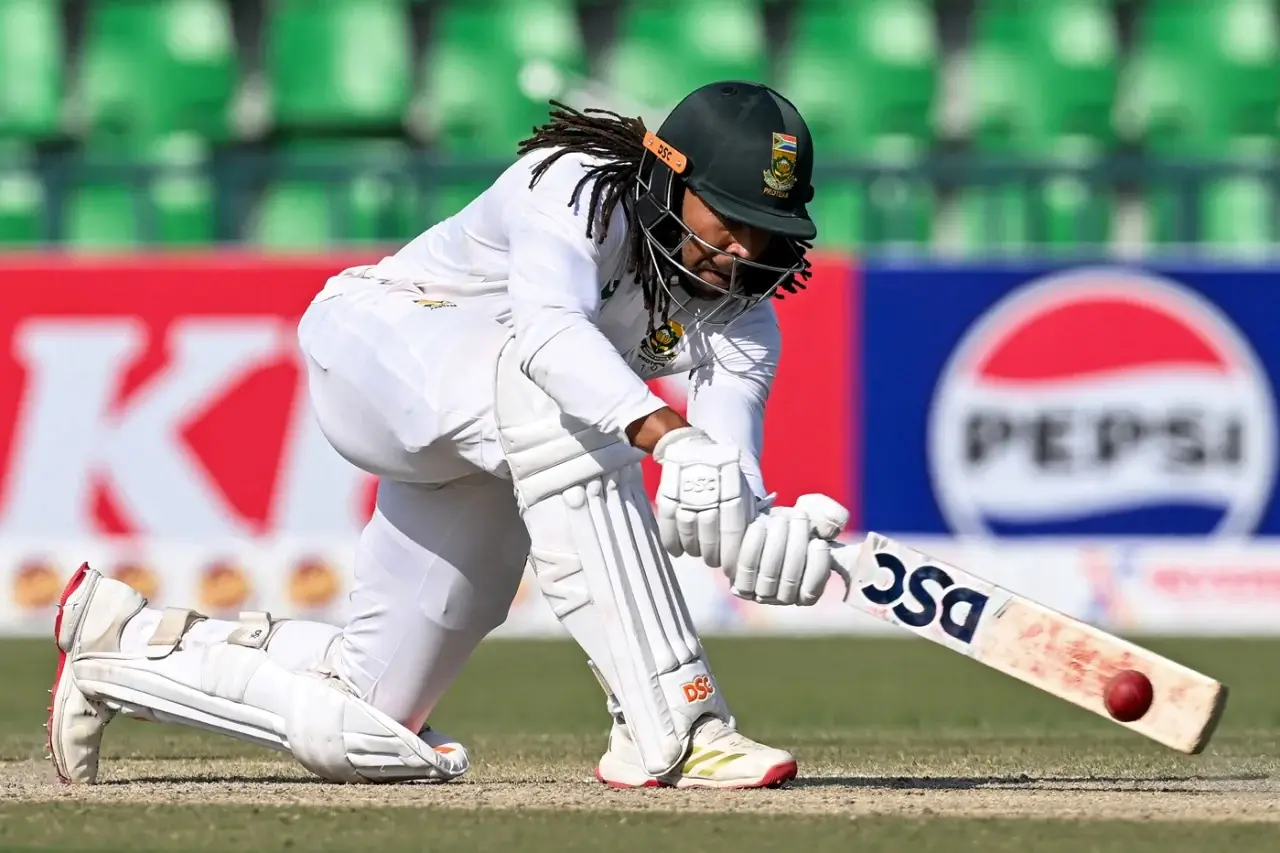South Africa’s new Test era continues to flicker with energy, but the wins remain out of reach. Their 93-run defeat to Pakistan in Lahore was less about collapse and more about incomplete execution. They matched Pakistan for most sessions, fought hard in tough conditions, yet lacked the killer touch that defines elite Test sides.
For Aiden Markram’s men, this wasn’t a failure in spirit — it was a failure in precision. A few poor spells, missed opportunities, and a missing seam option tilted the balance toward the hosts. In patches, South Africa looked like a side ready to take over world cricket again. But by stumps on day four, it was clear they’re still learning how to finish games they should control.
This loss won’t hurt their confidence, but it will test their learning curve. The plot is in place, yet the result remains missing, like the Bangladesh timeline against India.
Lessons from Lahore – Where South Africa Lost the Thread
South Africa began this Test with a solid plan — bowl first, exploit early movement, and pressure Pakistan’s middle order. For much of day one, it worked. At 199 for 5, they looked set to dismiss Pakistan under 250. Then, one bad session changed everything.
Mohammad Rizwan and Agha Salman counterattacked, scoring freely against South Africa’s spin pair. The visitors leaked 114 runs in the final session — a decisive swing. Markram later admitted they “had good plans but couldn’t control the sweep shot,” highlighting the tactical frustration.
That single phase set the tone. Pakistan found momentum; South Africa kept chasing it. They never truly recovered from that lapse in control, and it underlined an old weakness — holding intensity across long subcontinental sessions.
The Missed Opportunity with Bowling Combinations
Without Marco Jansen, South Africa lacked a second seamer who could reverse the old ball. Their spin-heavy lineup — Harmer, Muthusamy, and Subrayen — bowled diligently but without the late bite that Shaheen Afridi produced for Pakistan.
When conditions aged, Pakistan’s seamers adapted, finding reverse swing. South Africa’s bowlers didn’t. That difference in adaptability — not skill — turned the game. It’s a reminder that Test wins in Asia need more than patience; they need balance.
Selection Balance and the Missing Left-Arm Option
The absence of Jansen loomed large. On slow, abrasive pitches, left-arm seamers often create rough for spinners and angles that trouble batters. Without that weapon, South Africa’s bowling looked too similar.
Captain Aiden Markram hinted post-match that “another seamer could make a difference.” That reflection suggests a rethink for the second Test. With Keshav Maharaj set to return from injury, South Africa could now field a better-balanced attack — Maharaj’s experience in partnership with a pace pair could restore control.
For a side learning how to win away from home, this recalibration could be vital.
Keshav Maharaj’s Return Brings Hope
The return of Keshav Maharaj might be South Africa’s biggest gain. Fit and in rhythm after domestic cricket, Maharaj’s ability to control sessions could free up Harmer to attack more. He also brings leadership and composure that this young bowling group badly needs.
His 49-over spell for the Dolphins last week showed endurance and readiness. Expect him to slot straight back into the XI in Karachi.
Tony de Zorzi’s Grit Offers a Glimpse of the Future
Tony de Zorzi’s second Test century was a timely reminder of how patience can still win sessions. His effort wasn’t elegant, but it was purposeful. He survived Pakistan’s spinners early and punished loose deliveries later.
That innings showed what South Africa’s new core could become — technical, disciplined, and quietly confident. With Rickelton and Brevis adding contrast, the team’s batting foundation looks promising, even in defeat.
Tristan Stubbs and South Africa’s Middle-Order Dilemma
For all their promise, South Africa’s batting still lacks consistency in the middle order. Tristan Stubbs’ struggles continued — just one double-digit score in his last nine innings. His talent is unquestioned, but Test cricket demands rhythm and patience he hasn’t yet found.
With David Bedingham and Zubayr Hamza waiting, the selectors face a difficult call. Keeping Stubbs without domestic red-ball exposure could stall his growth further. But with packed schedules and no first-class cricket until December, finding him game time isn’t simple.
This dilemma sums up South Africa’s current transition — balancing youth development with immediate results.
Rickelton and Brevis – The Bright Spots Amid the Loss
Ryan Rickelton and Dewald Brevis embodied South Africa’s progress. Rickelton’s composure and shot selection stood out — he faced more balls than any player in the match, showing patience under pressure.
Brevis, meanwhile, brought fearlessness. His 54 off 54 balls lit up the morning session on day four. He counterattacked Pakistan’s spinners with sweeps and lofts, forcing them off rhythm. His natural flair and confidence could be the spark South Africa builds around.
These two young players — calm and chaotic — perfectly represent this team’s potential balance between discipline and daring.
Captain Markram’s Leadership Under the Microscope
Aiden Markram’s leadership showed maturity. He avoided excuses, emphasized accountability, and backed his players publicly. His honesty — “we had the moments, but couldn’t run with them” — reflected both frustration and focus.
He’s building a Test team grounded in belief, not fear. But tactical sharpness — especially around bowling combinations and field placements — remains a work in progress.
Positives That Outweigh the Defeat
Despite the 93-run margin, South Africa left Lahore with gains. Their fight in alien conditions, the resilience of their top order, and the emergence of Brevis and Rickelton give hope. The team didn’t crumble, and that’s key.
They’ll take heart from Tony de Zorzi’s grit and Harmer’s wicket-taking spells. Their bowlers maintained consistency across long spells, and the dressing room looked united — a sharp contrast to the fragmented vibe of previous tours.
For a rebuilding Test side, these signs matter more than one loss.
What Must Change Before Karachi?
Before the second Test, South Africa must address two clear points:
1️⃣ Rebalance their attack with a second seamer or Maharaj’s inclusion.
2️⃣ Strengthen the middle order, either through Bedingham or tactical flexibility.
If they manage those tweaks, their next performance could easily tilt the other way.
Conclusion: South Africa is Building the Right Story — They Just Need the Ending
South Africa’s loss in Lahore wasn’t a collapse; it was a chapter in a larger story of revival. They competed, adapted, and believed — but couldn’t close it out. Their structure, mindset, and energy are pointing in the right direction.
Winning in Asia is never easy. But with Markram’s leadership, Brevis’s spark, and Rickelton’s maturity, this team is getting closer to the balance they’ve lacked for years.
The defeat hurts, but the foundation feels firmer than before. South Africa are no longer searching for identity — they’re searching for consistency. The plot is clear — now it’s time to find the finish.







